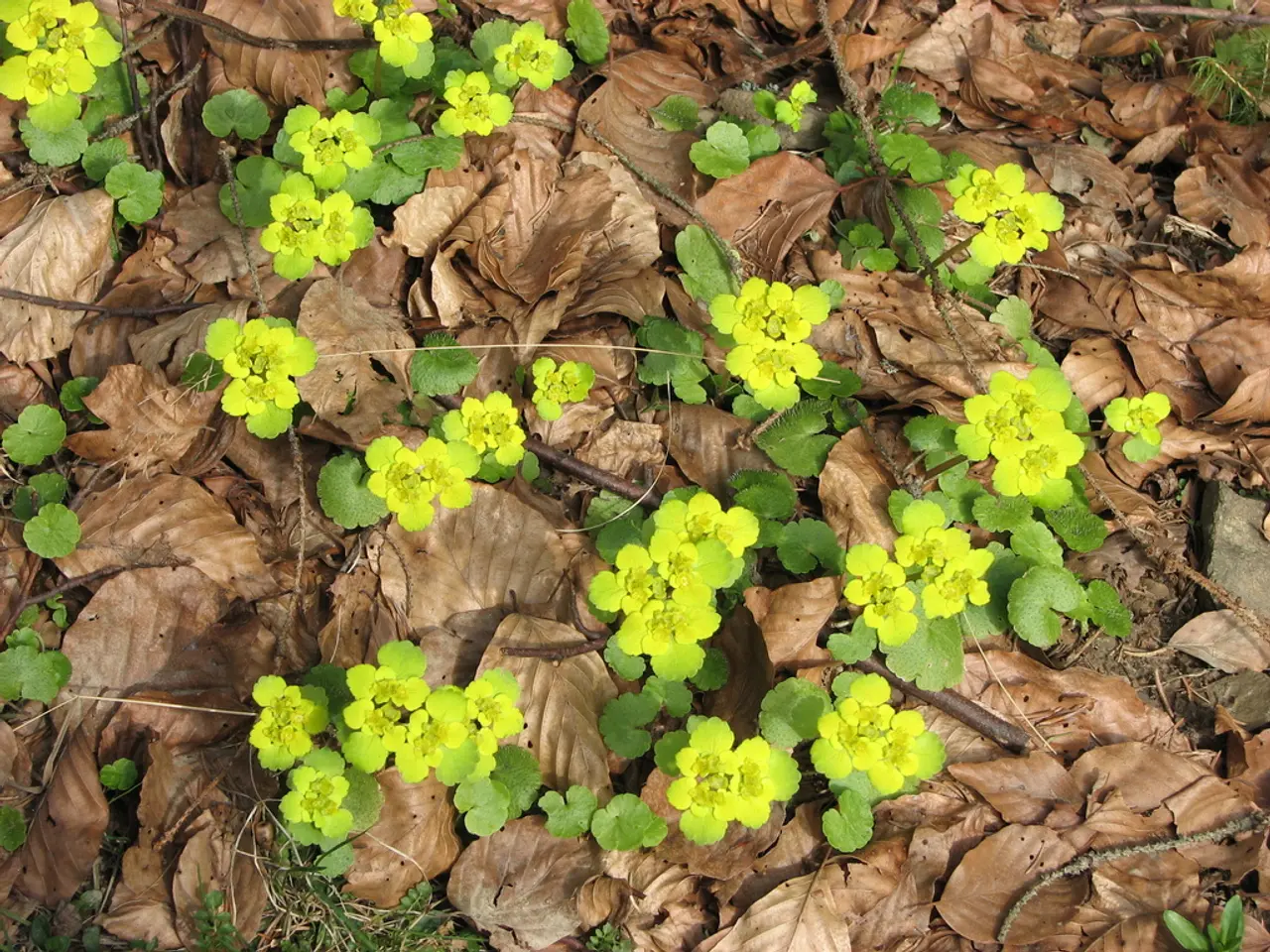Thriving Plants in Wet Soil: A Guide to Ideal Moist-Loving Species
Wet soil can pose a significant challenge for gardeners, leading to issues such as poor drainage, compaction, inhibited seed germination, and waterlogging. However, with the right strategies, it is possible to transform wet soil into a thriving garden.
One common cause of soil compaction is the mixing of sand into clay soils. The clay acts as a 'glue', creating a dense, concrete-like mass. To prevent compaction, it is important to avoid walking or driving on wet soil, and to use lightweight equipment when working on the lawn. Over-tilling the soil, especially when it is too wet, breaks down the soil structure, reducing pore spaces and making it easier for the soil to be compacted.
Raised beds can be a great solution for gardeners with wet soil, but it is important to address the issue of drainage and soil compaction when building them. To combat soil compaction in raised beds, you can physically aerate the soil and improve its quality by adding sand, gravel, or compost. To improve drainage in raised beds, you can build them on legs or cinder blocks, or dig a dry well underneath the bed.
Common ways to improve drainage in wet soil for better plant growth include installing French drains, increasing soil permeability, planting in raised beds, regrading land or improving slope, using channel drains or catch basins, and pricking or spiking the lawn. French drains are trenches filled with gravel and pipes that direct excess water away from waterlogged areas into lower drainage zones. Incorporating organic matter like compost or manure and aerating the soil with a garden fork or mechanical aerator breaks up compaction and allows water to pass through more easily.
Regarding plant selection, choosing plants that tolerate or absorb excess water without clogging drainage is essential. Cleaning gutters and downspouts can also prevent water accumulation near plants. These methods collectively reduce anaerobic soil conditions that harm roots and limit nutrient uptake.
When filling raised beds, it is recommended to use high-quality organic soil and compost. Combining physical drainage structures (like French drains), soil texture improvements, and strategic planting designs offers the best approach to alleviate wet soil and enhance plant growth.
In conclusion, with the right strategies and techniques, wet soil can be transformed into a thriving garden. By addressing soil compaction, improving drainage, and choosing the right plants, gardeners can overcome the challenges posed by wet soil and enjoy a beautiful, healthy garden.
[1] Gardening Know How. (2021). Improving Drainage in Wet Soil. Retrieved from https://www.gardeningknowhow.com/garden-how-to/soil-fertilizers/improving-drainage-in-wet-soil.htm
[2] The Spruce. (2021). How to Improve Drainage in Your Garden. Retrieved from https://www.thespruce.com/improve-drainage-in-your-garden-3132329
[3] HGTV. (2021). How to Improve Soil Drainage. Retrieved from https://www.hgtv.com/design/outdoors/gardening/how-to-improve-soil-drainage
[4] The Old Farmer's Almanac. (2021). How to Solve a Wet Lawn. Retrieved from https://www.almanac.com/content/solve-wet-lawn
- To combat the issue of wet soil compacting in raised beds, consider aerating the soil physically and enhancing its quality by adding sand, gravel, or compost.
- Improving drainage in home-and-garden areas with wet soil can be accomplished through various methods, such as installing French drains, increasing soil permeability, using channel drains or catch basins, and employing raised bed designs.




